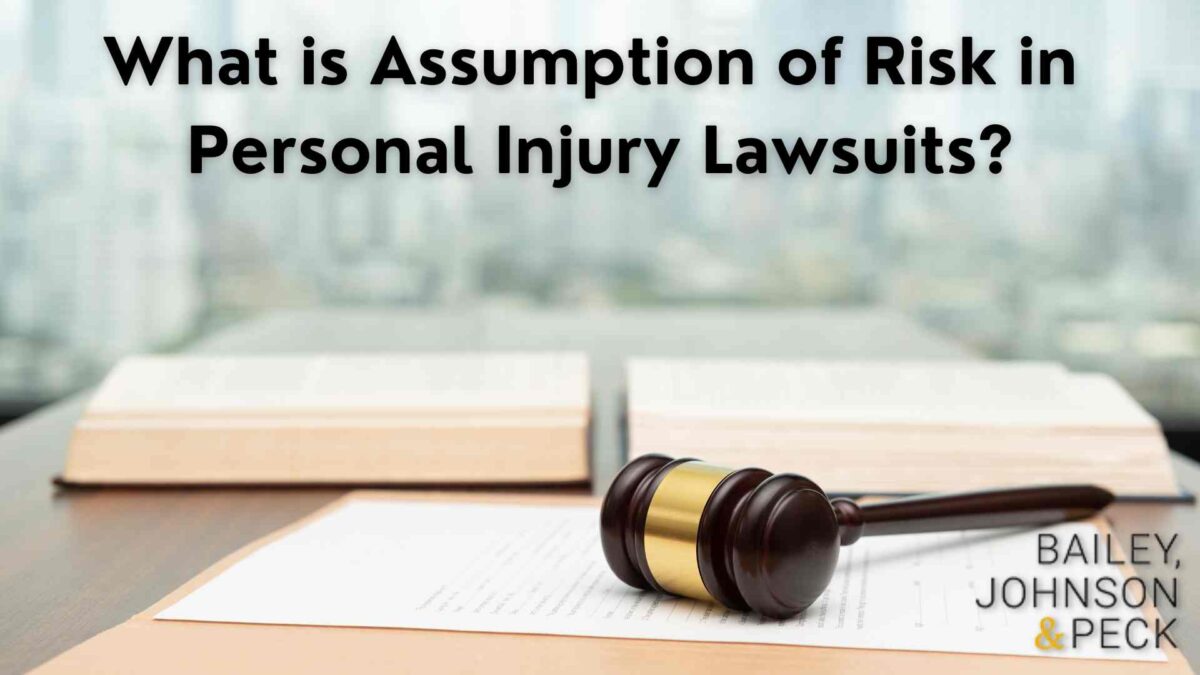Accidents are, unfortunately, a part of life that we all have to live with. Sometimes, those accidents are minor and don’t result in injuries. However, when accidents do cause harm, it’s common to want to recover compensation from the responsible party, especially if you suspect negligence.
In some cases, accidents occur due to engaging in a dangerous activity, like riding a roller coaster, rock climbing, or attending a baseball game. When injuries are sustained during events with a known or particular risk, the defense may use an assumption of the risk legal doctrine. If the assumption of risk defense is used, the plaintiff may lose the eligibility to recover full compensation or any compensation at all.
This assumption of the risk defense tactic can greatly affect a person’s personal injury claim, which is why you need an experienced personal injury attorney who understands the ins and outs of the assumption of risk doctrine. If you’ve been injured due to another’s negligence, you have the legal right to file a personal injury lawsuit against the responsible party.
To discuss your case with an Albany personal injury attorney at Bailey, Johnson & Peck, P.C., call 518-456-0082 today.
What is the Assumption of Risk Defense?
The assumption of risk doctrine is a legal defense that a person can use when facing a personal injury case. If the defense can prove that the plaintiff knew the specific risk associated with their actions and chose to follow through anyway, it could hinder the plaintiff’s recovery.
In order to use this assumption of the risk defense strategy, the defendant must prove the following:
- The plaintiff was aware of the risks involved.
- The plaintiff accepted the risk, either through a written or spoken agreement.
When using the assumption of risk defense, the defendant claims the plaintiff assumed a known risk; therefore, the defendant has no legal duty to compensate for the plaintiff’s injury.
By law, four elements must be met when litigating any personal injury case to prove negligence and hold the responsible party liable. If the defendant provides a valid defense confirming the assumption of the risk and the plaintiff acted despite this, it negates the duty of care component: that the defendant owed the plaintiff the duty of care.
Example of Assumption of Risk

A common example of risk assumption is when a person attends a baseball game. There’s an understood level of risk associated with sitting in the stands. If a person gets hit by a fly ball, they cannot file a personal injury lawsuit because they did assume that risk.
In 1998, Jane Costa sued the Boston Red Sox after she was hit by a foul ball in the face, leading to severe and permanent injuries. Costa claims that had she known the risk of being hit with a foul ball, she wouldn’t have attended the game. However, a warning on the ticket stated the dangers of sitting in an unprotected area, but Costa claims she didn’t read her ticket.
Referencing the assumption of risk, the Massachusetts court dismissed the lawsuit, stating that the dangers associated with attending a baseball game were obvious, and the Red Sox did not owe the plaintiff the duty to warn about the obvious dangers.
Primary vs. Secondary Assumption of Risk
The assumption of the risk can be divided into primary and secondary assumption categories.
Primary Assumption of Risk
The primary assumption of risk occurs when a person:
- Knows the inherent risks of participating in the activity
- Decides to participate in the activity at their own risk
- Receives injuries consistent with the risks inherent or associated with the activity
With the primary assumption of the risk, the defendant’s negligence does not play a part in the victim’s recovery because the plaintiff assumed the risk associated with the activity. In Costa v. the Red Sox, a primary assumption of risk was applied in determining the case’s outcome.
Secondary Assumption of Risk
The secondary assumption of the risk happens when the defendant owes the victim the duty of reasonable care, but the injured plaintiff experiences that risk or the risk was enhanced because of the defendant’s breached duty of reasonable care.
A secondary assumption could happen in two different ways:
- A reasonable decision or assumption of risk
- An unreasonable decision or assumption of risk
In secondary assumption cases, the victim’s compensation could be reduced, but they could still recover some compensation. An example of a secondary assumption of risk is if a ski lodge does not warn against a dangerous area of a ski slope. A skier who knows about the risk and chooses to go down the slope anyway has assumed secondary risk.
Express Risk Assumption vs. Implied Assumption

A plaintiff can accept the assumption of risk in two different ways: express assumption or implied assumption.
Express Assumption
Express assumption occurs when a person agrees and acknowledges risk either with a written or verbal agreement. A waiver that someone signs is a form of express assumption. For example, when a person signs a waiver before participating in a contact sport, they acknowledge that the dangerous activity comes with risks.
This is an express assumption of risk.
However, while waivers can protect defendants to an extent, they often have loopholes. Some courts may ignore a waiver if they’re too broad or unclear. It’s important to note that waivers do not protect defendants from reckless actions.
Implied Assumption
The implied assumption of risk occurs when a person engages in dangerous activities or activities with inherent dangers, but there is no verbal or written agreement. Despite there not being an agreement in place, the plaintiff knowingly assumed risk and chose to participate in an inherently dangerous activity anyway. A common example of an implied assumption of risk is a person riding a rollercoaster. While waiting in line, the person watches the roller coaster, understands that risk exists, and still chooses to ride the ride.
In personal injury cases where implied assumption qualifies, the plaintiff may not recover any compensation for damages, or those damages could be limited based on their percentage of fault.
Call an Experienced Personal Injury Lawyer at Bailey, Johnson & Peck Today

Personal injury lawsuits can be complicated legal matters that require extensive knowledge and experience. When you’ve been injured due to another’s negligence, you deserve to be financially compensated for your injuries. If the defense tries to use the assumption of risk strategy, your legal team needs to go to bat for you and disprove their claims.
At Bailey, Johnson & Peck, P.C., our personal injury attorneys have been representing clients in cases involving personal injury for over 40 years and are ready to represent you. When you schedule a free consultation with one of our experienced attorneys, we’ll evaluate your case and determine the best course of action. When a person’s negligence causes others harm, they deserve to be held responsible for their actions. You can trust that when you choose Bailey, Johnson & Peck, P.C. for your personal injury case, our legal team will fight for your rights and work diligently to recover fair compensation for you and your injuries.
To schedule a consultation with one of our Albany premises liability attorneys for personal injury claims, call Bailey, Johnson & Peck, P.C. at 518-456-0082 today.




